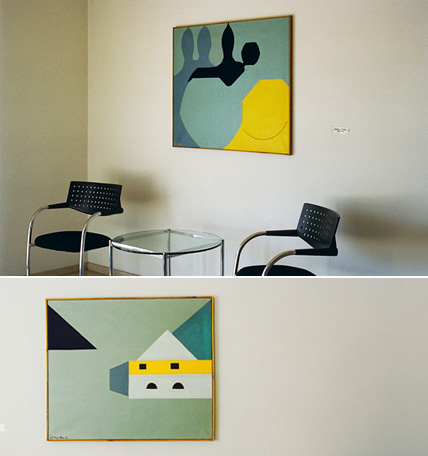| DE / EN |
||||
 Rudolf Urech-Seon Composition P, 1954 – Orient, 1958 Photograph: Katalin Deér, 2011, Verwaltungsgebäude |
 [...] and by doing so reset the parameters for the production and reception of art, so in the last two decades our perception of new art has been shaped largely by narrative artists. Photography and moving pictures have been our main focus of attention. Video, for example, unlike film allows the artist to control images even while recording them. Critical engagement with this specific quality of the medium was among the hallmarks of the generation of video art pioneers. Pipilotti Rist, by contrast, who belongs to the second generation of video artists, no longer uses the video camera for media-oriented, systemic critiques of perception, observation, and surveillance, but on the contrary makes her own person the center of her work – as a proxy for the viewer, as it were – and in doing so exploits to the full the medium’s capacity to generate dream-like, fantastical, and erotic images and moods, far removed from all postmodernist reflections on the medium. We observe how, towards the end of the twentieth century, telling stories in pictures came to the fore. This qualitative progress in art also changed our expectations of what art should be and so prepared the ground for a delayed reappraisal of the late works of Rudolf Urech-Seon (1876–1959). Urech-Seon was already thirty-seven when he enrolled at the Munich Academy in 1913. After returning to Switzerland in 1916, he lived as an artist with his family in Seon, where until moving to Munich he had run a house-painting business. Landscape painting was for a long time the center of his art. [...] |
Art from SwitzerlandHomeNews – November 2020 – March 2020 – October 2019 – March 2018 – October 2017 – April 2017 – January 2017 – May 2016 – December 2015 – May 2015 – March 2015 – December 2014 – August 2014 – May 2014 – October 2013 – April 2013 – July 2012 – March 2012 – November 2011 – May 2011 – January 2011 |